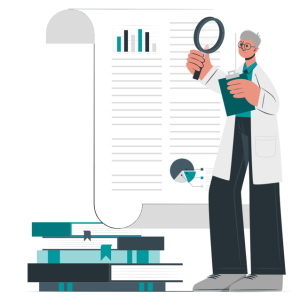Updated MDCG Guidance on Clinical Investigation
New Questions & Answers
Medical device safety and performance can be demonstrated via clinical investigations. The Medical Device Coordination Group amended MDCG 2021-6 clinical investigation recommendations in December 2023. The new revision introduced new questions and answers and revised some previous answers.

General Questions on Clinical Investigation
The Guidance now includes various EU Medical Devices Regulation (MDR) clinical investigation requirements. Key clarifications in the amended MDCG 2021-6 are as follows.
Q2: Is there legislation other than the MDR that needs to be considered when conducting clinical investigations of devices?
The MDR allows, and for some aspects requires, Member States to have national legislation in place. This includes procedures for review and authorisation by ethics committees, responsibility for medical care provided to subjects, investigator qualifications, legally designated representatives, damage compensation systems, designation of competent authority, as well as additional clinical investigation requirements under EU MDR Article 82. Complying with the MDR does not remove the obligation of sponsors to comply with other relevant legislation. Hence, if any other applicable legislation exists, the sponsors must comply with the additional relevant legislation.
Q4 – Are all clinical studies that involve use of devices considered clinical investigations as defined by the MDR?
No, there are situations when devices are used in clinical research but where the scope is not to make a systematic investigation involving one or more human subjects, to assess the safety or performance of the device(s) used. For example, a clinical trial of a medicinal product may involve determining blood pressure or oxygen saturation. This will require the use of devices but since the safety or performance of the devices used for blood pressure/oxygen saturation are not being assessed, such studies would not be considered clinical investigations and devices used in these studies are not investigational devices as defined by the MDR.
Q14 – Are clinical studies of combinations of medical devices and medicinal products subject to the MDR requirements for clinical investigations?
For devices incorporating medicinal substances as an integral part of the device, which if used separately is a medicinal product with an action ancillary to that of the device, the sponsor has to perform the clinical investigation according to the MDR.
However, if the action of the medicinal substance is principal and not ancillary to that of the device, the integral product shall be governed by Directive 2001/83/EC21 or Regulation (EC) No 726/2004.
Q15 – Which regulatory pathway shall a sponsor follow in order to conduct a clinical study (investigation) to collect clinical data both for a medicinal product and a device that will be used to administer the medicinal product, but it is not a single integral product?
The medicinal product and the medical device studied in a situation where they are not a single integral product at the time of administration, are governed by two different legal frameworks. This applies even if they are co-developed and/or intended to be used in a specific combination.
A clinical study which is collecting data for both a device and a medicinal product will have to comply with the regulatory requirements in relation to clinical investigations of medical devices (in the MDR) as well as the regulatory requirements for clinical trials of medicinal products, which are governed by the Regulation (EU) 536/2014 on clinical trials for medicinal products for human use (CTR).
Q16 – Is there a common EU procedure for combined studies with devices and medicinal products?
No, clinical investigations of devices are regulated by the MDR, while clinical trials of medicinal products are regulated by the Regulation (EU) 536/2014 on clinical trials for medicinal products for human use (CTR). There is no dedicated procedure for combined studies foreseen in the regulations and therefore, currently, no harmonized procedure is in place. Therefore, the clinical study has to be designed so that it fulfils both regulations.
Q17 – According to the MDR, are usability tests considered clinical investigations?
Manufacturers should document the usability of a medical device, and various types of usability test may be conducted for this purpose. Depending on the overall test design, usability testing may or may not fall under the definition of clinical investigation in Article 2(45) of the MDR.
There are several factors to consider when determining whether a usability test is also a clinical investigation, such as the scope and purpose of testing, and how the human subjects are exposed to the device.
During device development it is recommended to design and conduct usability tests with limited human exposure to device related risks, in order to be able to adequately reduce the risks prior to the exposure to the device which is necessary for investigating device performance and/or safety in a subsequent clinical investigation.
Typically, a usability test that fulfils the definition of clinical investigation falls under Article 62(1) of the MDR, but there may be situations where Article 82 of the MDR could be relevant.
Q18 – May a retrospective clinical study fall under the definition of a clinical investigation?
If performance and/or safety of the device are analysed in the study retrospectively, separately from the decision to use the device, the study should not be considered as a clinical investigation according to the MDR, however there may be national provisions which need to be taken into consideration.

Application Content
Q25 – What documents do I have to submit with an application for a clinical investigation that follows article 62(1) of the MDR?
The documentation to be provided is listed in ISO 14155 (also see chapter II in Annex XV of the MDR). This can vary from country to country in Europe so do review local clinical investigation guidance. In many cases you need both the competent authority and local ethics approval before the study can commence.
MDCG 2021-08 provides templates for clinical investigation application/ notification created to support clinical investigation procedures with respect to the MDR. In addition, check the website of the relevant competent authority in the country where the clinical investigation is to be conducted for national requirements regarding application content. In the Case of UKCA you will need to consult MHRA and submit a IRAS application to obtain both clearance from MHRA and Ethics Board.
Supporting documents may be provided in order to show compliance with applicable requirements and to provide sufficient information on the proposed study and investigational product(s) for the assessors to make a decision.
Q26 – What documents do I have to submit for a clinical investigation that follows article 74(1) of the MDR?
As above, Article 74(1) of the MDR and ISO 14155 points out that the same documentation has to be provided with a notification as for an application:
- Clinical Investigation plan (CIP)
- Investigation brochure (IB) – might be user or patient specific clarify with consultant and usability information.
- Case Report Form (CRF)
- Patient consent and patient information brochure.
- Statistical Analysis Plan (SAP)
MDCG 2021-08 provides templates for clinical investigation application/ notification created to support clinical investigation procedures with respect to the MDR. In addition, check the website of the relevant competent authority in the country where the clinical investigation is to be conducted, to check national requirements regarding the notification content.
Q27 – What documents do I have to submit for a clinical investigation that follows article 82 of the MDR?
The submission requirements for studies according to Article 82 of the MDR are subject to national provisions. Therefore, it is necessary to check the website of the relevant competent authority and/or the relevant ethics committee in the country where the clinical investigation is to be conducted, to obtain information on national requirements.
Q28 – What is the expected content of the Clinical Investigation Plan (CIP)?
The purpose of the CIP is to provide the investigators with sufficient data on safety and performance of the investigational device. This includes data from pre-clinical testing or clinical investigations to justify human exposure to the investigational device. Section 2 in chapter II of Annex XV of the MDR lists the required content. In addition, it is recommended that the annex B of ISO 14155:202033 is adhered to.
Time Considerations for Clinical Investigations
Q39 – When does the sponsor have to notify an early termination of a clinical investigation?
If a clinical investigation is temporarily halted or terminated early, the sponsor has to inform the Member State concerned within 15 days, or within 24 hours if based on safety grounds.
Q41 – For how long must study documentation be retained?
Documentation mentioned in EU MDR Annex XV must be kept for a period of at least 10 years after the clinical investigation with the device in question has ended. Or, in the event that the device is subsequently placed on the market, at least 10 years after the last device has been placed on the market. In the case of implantable devices, the period shall be at least 15 years.
Q43 – Is there a template for the mandatory summary of the clinical investigation report referred to in article 77(5) of the MDR?
Refer to the Commission Guidance on the content and structure of the summary of the clinical investigation report (2023/C 163/06).
Arrangements for the Transitional Period
Q44 – When will EUDAMED allow applications for clinical investigation?
The use of EUDAMED for Clinical Investigation and Performance Studies becomes mandatory after the 6 months starting from the announcement that EUDAMED is fully functional.

Legal Representative
Q48 – What is the role and responsibility of the sponsor’s legal representative?
Non-EU sponsors must appoint a legal representative in the EU. The legal representative is responsible for ensuring compliance with the sponsor’s obligations pursuant to the MDR. Any communication with that legal representative shall be deemed to be a communication with the sponsor.
It’s recommended that a contract between the parties obliges the sponsor to provide the legal representative with all required information, and the legal representative to immediately notify the sponsor in case they become aware of any noncompliance with the Regulation. MDR Annex XV Chapter III states other obligations of the sponsor.
Q49 – How should a legal representative check the sponsor’s compliance with the MDR?
The legal representative is responsible for ensuring compliance with the sponsor’s obligations pursuant to the MDR. The MDR does not specify how a legal representative fulfils the legal obligations.
The legal representative would need permanent and integral availability and access to the technical documentation of the investigated device and clinical investigation documentation, in order to be able to ensure that this information has been drawn up and complies with the MDR.
Q50 – Would it be sufficient that the legal representative is able to provide documents from the sponsor upon request by authorities?
The documentation should be kept at the disposal of the competent authorities, even if the sponsor goes bankrupt or ceases its activity prior to the end of the specified retention period. If you are a non-EU sponsor and want to conduct a clinical investigation in the EU, you need a legal representative.
CLIN-r+ recommendations
When clinical data is insufficient to cover all devices, intended use, safety, and performance claims, manufacturers should conduct a gap analysis based on MDR standards. Data gaps can be filled in several ways. PMCF studies may be the best way to gather clinical evidence, although scientifically sound questionnaires or registries can also be used. Manufacturers might limit the device’s intended use until clinical data is available.
Manufacturers without this expertise should consider partnering with an experienced consultancy when assessing standards, risk, and clinical data and considering what clinical studies are best suited for your devices’ CE marking needs. Consultancies also come with resources such as clinical study designers, statisticians and experienced SoTA medical writer’s systematic review helping expand your companies’ capabilities cost-effectively.
Clin-r+ provides expert assistance and has a wealth of experience to call upon. We can assist your transition and ensure you are MDR compliant. To learn more about our services and how we can help. Get in touch

